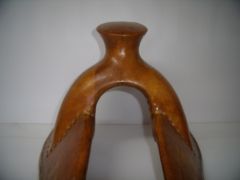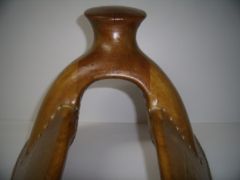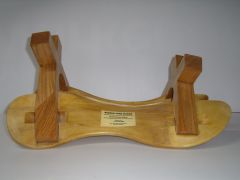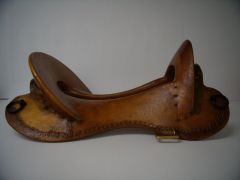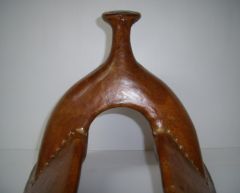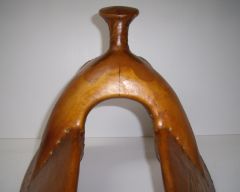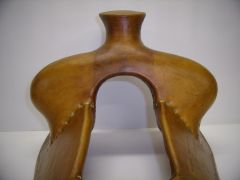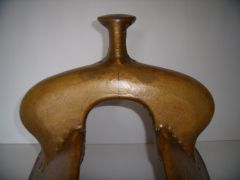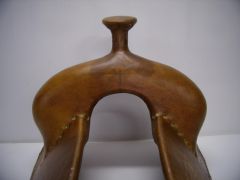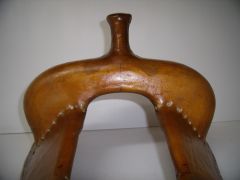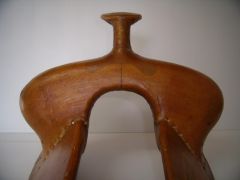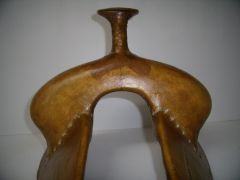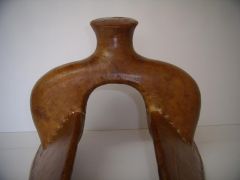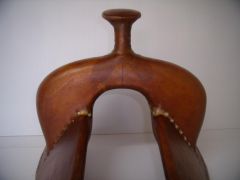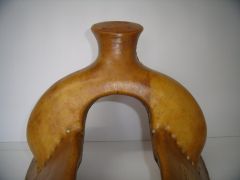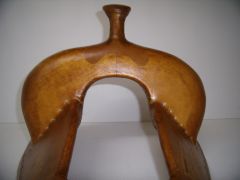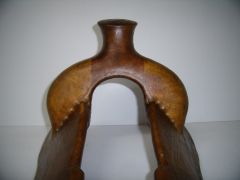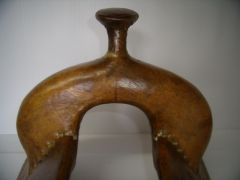-
Posts
423 -
Joined
-
Last visited
Content Type
Profiles
Forums
Events
Blogs
Gallery
Everything posted by Rod and Denise Nikkel
-

Wade 8 1/2" Rod Nikkel Saddle Trees 0610122
Rod and Denise Nikkel posted a gallery image in Our Leatherwork Galleries
-

Wade 8" Rod NIkkel Saddle Trees 0708099
Rod and Denise Nikkel posted a gallery image in Our Leatherwork Galleries
-

Pack Tree Rod Nikkel Saddle Trees
Rod and Denise Nikkel posted a gallery image in Our Leatherwork Galleries
-

McClellan 1859 Rod Nikkel Saddle Trees 0611140
Rod and Denise Nikkel posted a gallery image in Our Leatherwork Galleries
-

Slick Fork 10" Rod Nikkel Saddle Trees 0805056
Rod and Denise Nikkel posted a gallery image in Our Leatherwork Galleries
-

Slick Fork 9" Rod Nikkel Saddle Trees 0701003
Rod and Denise Nikkel posted a gallery image in Our Leatherwork Galleries
-

Slick Fork 8" Rod Nikkel Saddle Trees 0705054
Rod and Denise Nikkel posted a gallery image in Our Leatherwork Galleries
-

Will James wood post 13 1/2" Rod Nikkel Saddle Trees 0711133
Rod and Denise Nikkel posted a gallery image in Our Leatherwork Galleries
-

Will James 13" Rod Nikkel Saddle Trees 0612167
Rod and Denise Nikkel posted a gallery image in Our Leatherwork Galleries
-

Packer 12" Rod Nikkel Saddle Trees 0808103
Rod and Denise Nikkel posted a gallery image in Our Leatherwork Galleries
-

OY Calf Roper 13" Rod Nikkel Saddle Trees 0805048
Rod and Denise Nikkel posted a gallery image in Our Leatherwork Galleries
-
From the album: Rod Nikkel Saddle Trees
13 1/2" wide wood post Modified Association tree© © leatherworker.net
-

Modified Association 14" Rod Nikkel Saddle Trees 0708094
Rod and Denise Nikkel posted a gallery image in Our Leatherwork Galleries
-

Louellen 13" Rod Nikkel Saddle Trees 0808096
Rod and Denise Nikkel posted a gallery image in Our Leatherwork Galleries
-

High Country Wood Post 12 1/2" Rod Nikkel Saddle Trees 0712134
Rod and Denise Nikkel posted a gallery image in Our Leatherwork Galleries
-

High Country 12 1/2" Rod Nikkel Saddle Trees 0709105
Rod and Denise Nikkel posted a gallery image in Our Leatherwork Galleries
-

Chuck Sheppard Wood Post 12" Rod Nikkel Saddle Trees 0610134
Rod and Denise Nikkel posted a gallery image in Our Leatherwork Galleries
-

Chuck Sheppard 12 1/2" Rod Nikkel Saddle Trees 0611143
Rod and Denise Nikkel posted a gallery image in Our Leatherwork Galleries
-

Buster Welch 13" Rod Nikkel Saddle Trees 0802023
Rod and Denise Nikkel posted a gallery image in Our Leatherwork Galleries
-

Bowman 11" Wood Post Horn Rod Nikkel Saddle Trees 0806069
Rod and Denise Nikkel posted a gallery image in Our Leatherwork Galleries
-

Bowman 12" Rod Nikkel Saddle Tree 0611144
Rod and Denise Nikkel posted a gallery image in Our Leatherwork Galleries
-
At the risk of giving you information overload, check out this old thread on Bars and Bottoms. http://leatherworker.net/forum/index.php?showtopic=12763 As a quick answer to your question on bar types: First thing - they vary between tree makers. Nothing is standard. Some of the names have to do with the shape of the outline - how much overall surface area there is. Some makers have specific amounts of rock and twist to go with the names they call their bars. Others (ourselves included) use measurements to make those changes. The only thing that is really consistent is that Arizona bars only have a front stirrup groove, no back groove. This was started to cut back on breakage at the stirrup groove, but it means you either have a lump at the edge of the stirrup leather or a section of the bar that doesn't have contact, cutting down usable surface area, by trying to avoid that lump. We won't build them because we feel it will adversely affect fit either way. While there is a more common shape often associated with the Arizona bar, some makers offer "Arizona bars" as an option within their other bar types. In other words, the other bar outlines and shape but with no back stirrup groove. The "Wade bars" generally have a longer front bar tip to accommodate the thicker stock on a Wade tree and have a larger overall surface area. "Northwest bars" also have an overall larger surface area to distribute the rider's weight better than a lot of the other types. Both of these last two have been used more on ranch saddles that are used for long hours.
-

Homemade drawdown stand
Rod and Denise Nikkel replied to Kevinjohnson's topic in General Saddlery Discussion
Gary, Welcome to LW.net! Glad to have you here. Thanks for the compliment. Yup, remember those trees for sure. First exposed wood horns we did. You are correct on the wood types - Jarrah for the first one and Purple Heart for the second. We have used Jarrah on other exposed horns as well. Really nice wood. Nice work on the saddles too! -

Flexible Saddle Tree
Rod and Denise Nikkel replied to rickybobby's topic in Saddle Supplies, Tools & Trees
Natalie, there really aren’t scientifically set “rules”. A lot of what we have read as “rules” regarding saddle fit, even when stated by people with Dr. in front of their name, are, in our opinion, incorrect (a polite way of saying hogwash), especially when extrapolated between English and Western saddles. For now, Rule #1 “don’t dig in anywhere” and Rule #2 “distribute the pressure over as much surface area as possible without breaking Rule #1” are the only rules that most people would agree on. That takes having a good bar design. The rest are theories and opinions, some backed by many years of experience (which means something), some “new and improved” (yet to be extensively field tested), and some claiming to be based on science. The scientific research behind saddle fit is still in its infancy. There is very little known from actual research. Over the next 5 to 10 years we will learn a lot as the technology improves and we can find out for sure what is happening under that saddle. The debate between fiberglass and rawhide will probably never end. There are some threads from a couple years ago discussing the issue. The technology behind hide hasn’t changed, and almost anyone can tell how thick a hide is, its condition and how well it is put on just by looking. The technology behind fiberglass has changed a lot and I doubt a layperson can tell just by looking what type of technique and materials have been used on a tree. Some makers are using the newer methods. A lot of trees sold still use the materials that originally gave fiberglass a bad name as a tree covering. If you want to order fiberglass, we would recommend that you learn a bit about the different techniques and ask some questions of the tree maker first. (The same goes for type of rawhide, what is used to stitch it with, protectants used on it, etc.) -
Thanks for the info, Barra. They were talking about using 3" stirrup leathers for a western style saddle so we would need to make them up somehow. We like the style better than just the rod they had on the other tree though. Safe enough to stay on when you want but come off when you need - at least most of the time!



